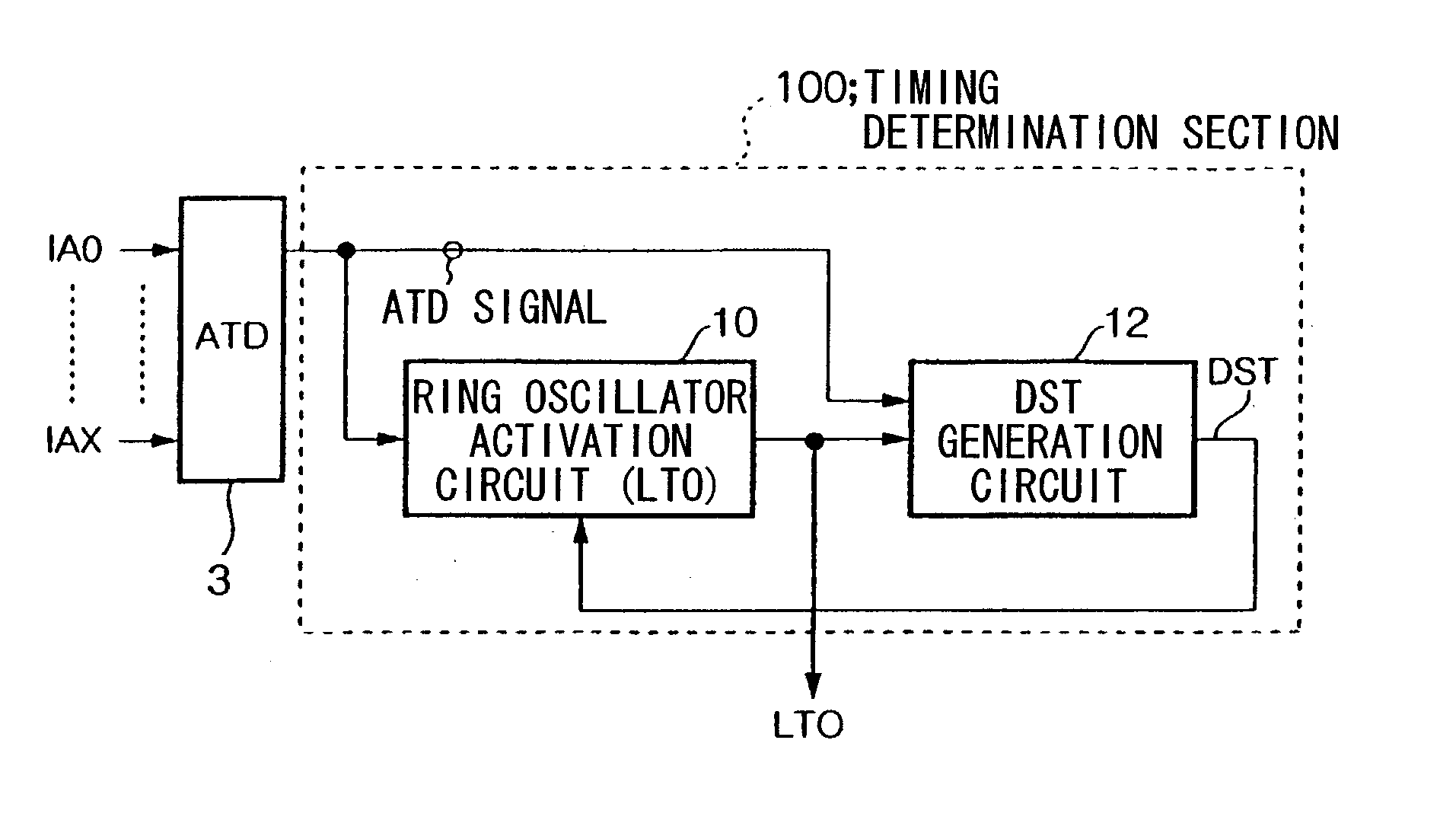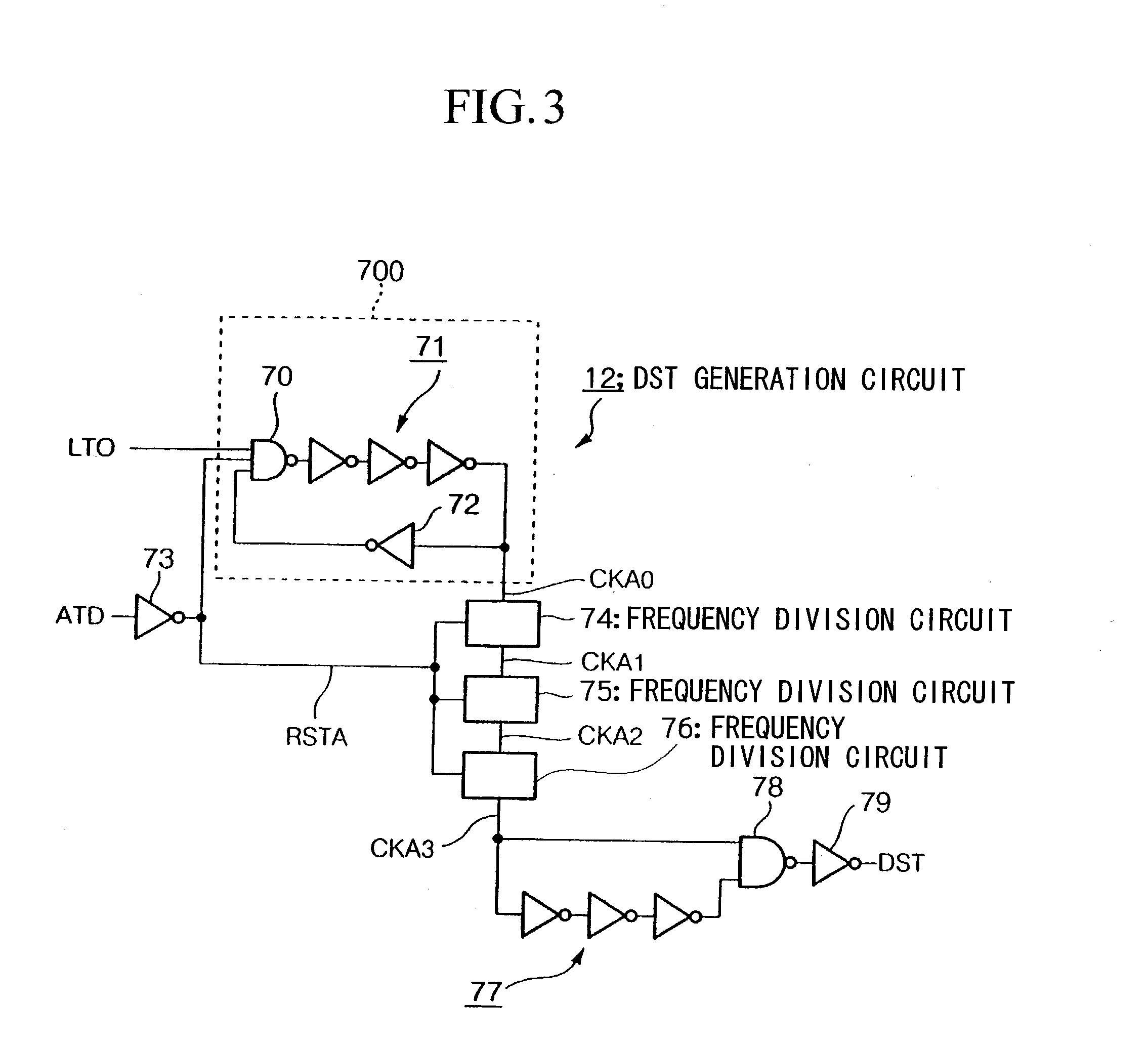One-shot signal generating circuit
- Summary
- Abstract
- Description
- Claims
- Application Information
AI Technical Summary
Benefits of technology
Problems solved by technology
Method used
Image
Examples
first embodiment
[0066] FIG. 1 shows the structure of a one-shot signal generation circuit according to the present invention. This one-shot signal generation circuit is used in an asynchronous memory, and it generates a one-shot signal LTO for determining an internal operational timing in response to a change in input signals such as address signals.
[0067] In this figure, the reference symbol 3 denotes an address transition detection circuit (ATD; Address Transition Detector) which detects transition of an address signal IA0-IAX (input signals) and generates an ATD signal (a pulse signal). In this first embodiment, the edge of the ATD signal has a more important meaning than its pulse width. In other words, the pulse width of the ATD signal which is generated by the address transition detection circuit 3 may be narrow provided that at least the arrival of its rising edge and its falling edge are significant, so that it will be sufficient for it to be set so that its edges arrive sharply.
[0068] The ...
second embodiment
[0092] In the following, the present invention will be explained.
[0093] The structure of the one-shot signal generation circuit according to this second embodiment of the present invention is shown in FIG. 6. With the first embodiment, it was arranged that the timing of the end edge of the one-shot signal was determined according to the final ATD signal in the skew period of the address signal; but, in this second embodiment, the timing of both the start edge and the end edge of the one-shot signal are determined by the single initial ATD signal in the same skew period.
[0094] In FIG. 6, the reference symbol 3 denotes an address transition detection circuit (ATD), and it is the same as the one according to the first embodiment. The reference symbol 110 denotes a timing determination section, and this, along with functioning as a circuit section for generating a one-shot signal LTPG, also is a timing determination section which determines the timing of the edge of this one-shot signal...
third embodiment
[0108] In the following, the present invention will be explained.
[0109] In this third embodiment, a one-shot signal generation circuit will be explained which generates a one-shot signal as a latch signal which is used for latching an external address, by the timing determination section 100 according to the first embodiment and the timing determination section 110 according to the second embodiment being employed together.
[0110] FIG. 10 is a block diagram showing the structure of the one-shot signal generation circuit according to this third embodiment. Moreover, a circuit diagram of an LC generation circuit 14 and an example of its operational waveform are respectively shown in FIGS. 11A and 11B. In FIG. 10, the same reference symbols are assigned to structural elements which are common to the first and second embodiments.
[0111] The ring oscillator activation circuit (LT0) 10, the ring oscillator activation circuit (LTPG) 11, the DST generation circuit 12, and the PG generation ci...
PUM
 Login to View More
Login to View More Abstract
Description
Claims
Application Information
 Login to View More
Login to View More - R&D
- Intellectual Property
- Life Sciences
- Materials
- Tech Scout
- Unparalleled Data Quality
- Higher Quality Content
- 60% Fewer Hallucinations
Browse by: Latest US Patents, China's latest patents, Technical Efficacy Thesaurus, Application Domain, Technology Topic, Popular Technical Reports.
© 2025 PatSnap. All rights reserved.Legal|Privacy policy|Modern Slavery Act Transparency Statement|Sitemap|About US| Contact US: help@patsnap.com



